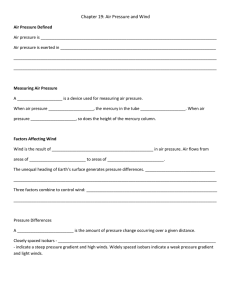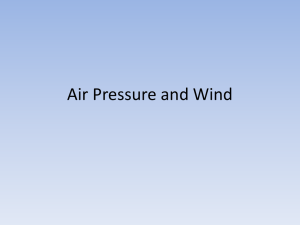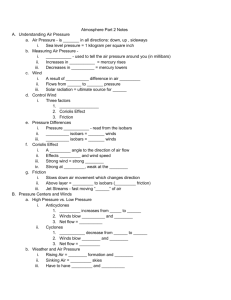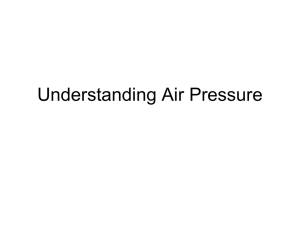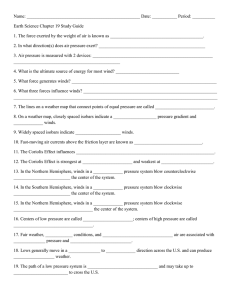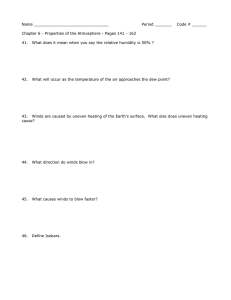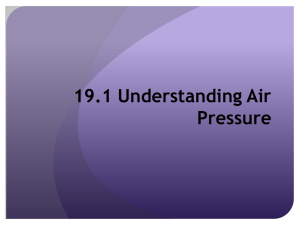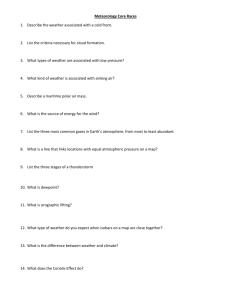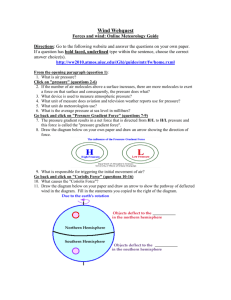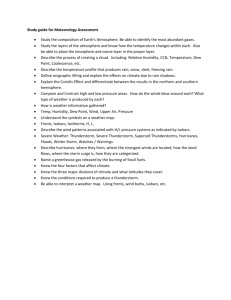SCI 100 - Meteorology
advertisement
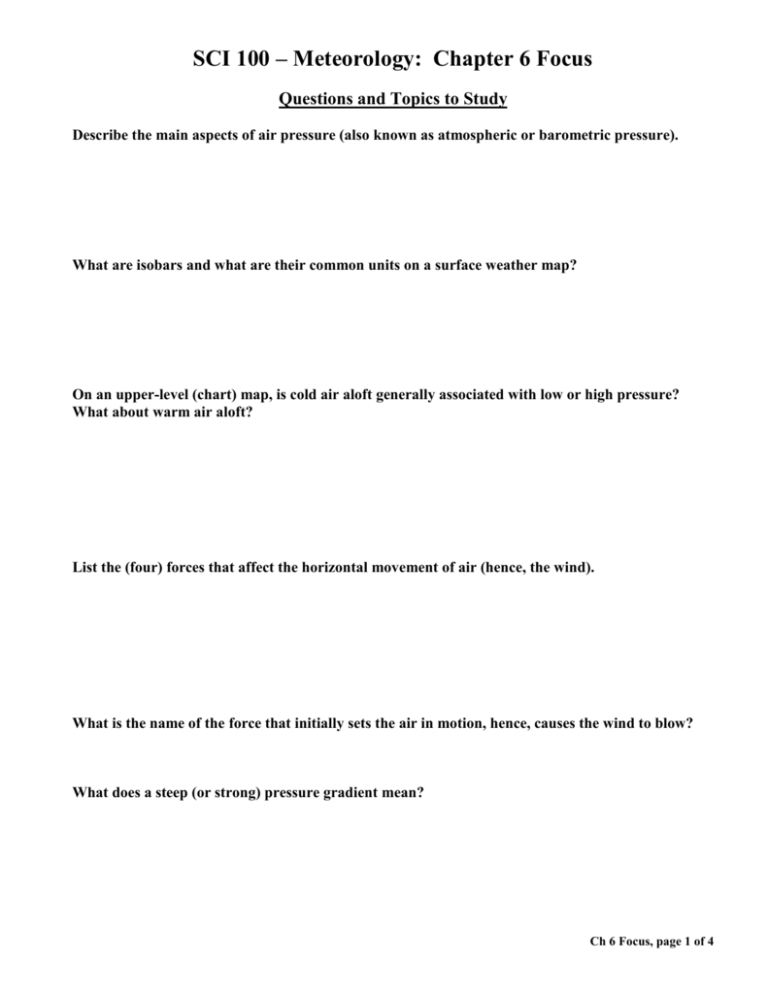
SCI 100 – Meteorology: Chapter 6 Focus Questions and Topics to Study Describe the main aspects of air pressure (also known as atmospheric or barometric pressure). What are isobars and what are their common units on a surface weather map? On an upper-level (chart) map, is cold air aloft generally associated with low or high pressure? What about warm air aloft? List the (four) forces that affect the horizontal movement of air (hence, the wind). What is the name of the force that initially sets the air in motion, hence, causes the wind to blow? What does a steep (or strong) pressure gradient mean? Ch 6 Focus, page 1 of 4 Chapter 6 Questions and Topics to Study (cont’d) Explain why, on a map, closely spaced isobars (or contours) indicate strong winds and widely spaced isobars (or contours) indicate weak winds? What does the Coriolis force do to moving air: (a) in the Northern Hemisphere? (b) in the Southern Hemisphere? Explain how each of the following influences the Coriolis force: (a) wind speed (b) latitude Ch 6 Focus, page 2 of 4 Chapter 6 Questions and Topics to Study (cont’d) Explain the main aspects of the geostrophic wind. Describe or depict how the winds blow around high-pressure areas and low-pressure areas aloft and near the surface in the Northern Hemisphere. Explain friction’s role in causing the surface winds to blow across the isobars and away from higher pressure and inward towards lower pressure. Ch 6 Focus, page 3 of 4 Chapter 6 Additional Key Terms and Concepts Anemometer Barometer Anticyclone (Mid-latitude) Cyclone Convergence Divergence Friction Layer Prevailing Wind Ridges Troughs Ch 6 Focus, page 4 of 4
